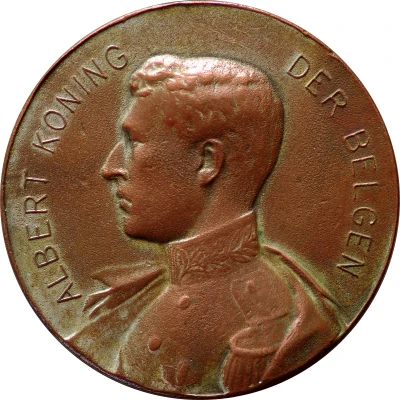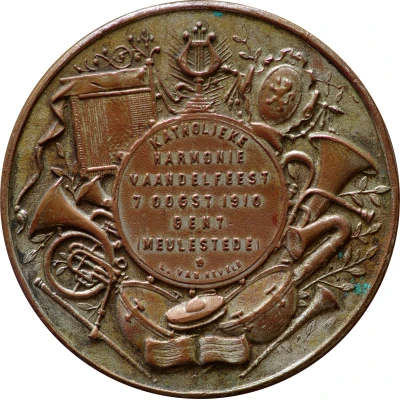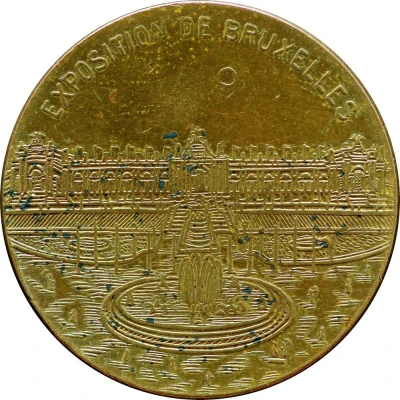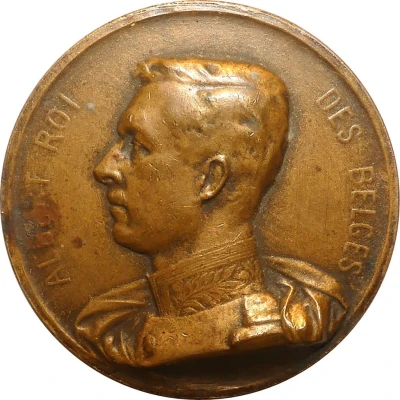
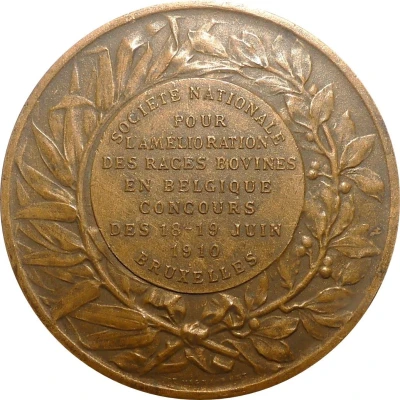

© Collector 86 (CC BY-NC-SA)
Société Nationale pour l'Amélioration des Races Bovines en Belgique
1910 year| Bronze | 48.8 g | 51 mm |
| Location | Belgium |
|---|---|
| King | Albert I (1909-1934) |
| Type | Medals › Commemorative medals |
| Year | 1910 |
| Composition | Bronze |
| Weight | 48.8 g |
| Diameter | 51 mm |
| Thickness | 5.4 mm |
| Shape | Round |
| Technique | Milled |
| Orientation | Medal alignment ↑↑ |
| Updated | 2024-11-12 |
| Numista | N#373020 |
|---|---|
| Rarity index | 97% |
Reverse
An outer ring features a grassy branch on the left and a laurel branch on the right. In a central circle, the legend. In the exergue, the maker's name.
Lettering:
SOCIÉTÉ NATIONALE
POUR
L’AMÉLIORATION
DES RACES BOVINES
EN BELGIQUE
CONCOURS
DES 18 - 19 JUIN
1910
BRUXELLES
DE VIGNE-HART
Edge
Plain
Comment
About the engraver Jacques Marin (1877-1950) (translation of https://nl.wikipedia.org/wiki/Jacques_Marin_(beeldhouwer):Jacques Marin, son of Jacques Jean Marin and Marie Vanhorick, studied at the Académie Royale des Beaux-Arts in Brussels, where he was a pupil of Jean-Joseph Jaquet, Louis François Lefebvre and Charles Van der Stappen.
Marin's sculptures include busts, allegorical figures, war monuments, medals and Christian religious works in bronze, ivory, clay, plaster and wax. Recurring themes are female figures and groups. In 1897, he won the Prix Godecharle for his sculpture "La Terre". He took part in the Prix de Rome three times: third in 1897, second in 1902 and 1906. He also took part in the Brussels, Antwerp and Ghent Salons and in international exhibitions. His work won several medals: silver at the Louisiana Purchase Exposition in Saint Louis (1904), gold at the Liège Universal Exhibition in 1905, silver at the Brussels Universal Exhibition in 1910 and silver at the Charleroi International Exhibition (1911).
He was director of the Tienen Academy (1912-1935). He was also a lecturer (1919-1947) at the Brussels Academy. During the Second World War, he was acting director (1941-1944). Willem De Backer was one of his students.
A retrospective of Marin's work was organized in Brussels in 1949. He died the following year, aged 72. He bequeathed 24 terracottas and 25 medals to the Royal Museums of Art and History.
About the De Vigne-Hart Society ( https://www.medalbook.com/makers/de-vigne-hart):
Laurent Hart (1810-1860) was a medallist who began his business in Theresianenstraat, 9000 Gent, Belgium (editor's note: there were obviously no postal codes in the 19th century). Around 1847, Hart moved his business to the Royal Gallery (Koningsgalerij), where it remained until 1974. The company used a screw press to manufacture medals. Hart died in 1860 and his widow, Octavie Van Doren, continued the business. The signature P. Hart is sometimes used during this period. Octavie Van Doren died in 1889 and, in 1890, Alice De Vigne became owner of the company. The company name became De Vigne-Hart and remained so until its closure in 1974. Alice De Vigne died in 1939, and it is unclear who ran the company. From 1964 to 1974, mother and daughter Londès ran the company. De Vigne-Hart closed its doors in 1974. It's not unusual to find medals marked L. Hart after Laurent Hart's death, as the company reused old dies.
